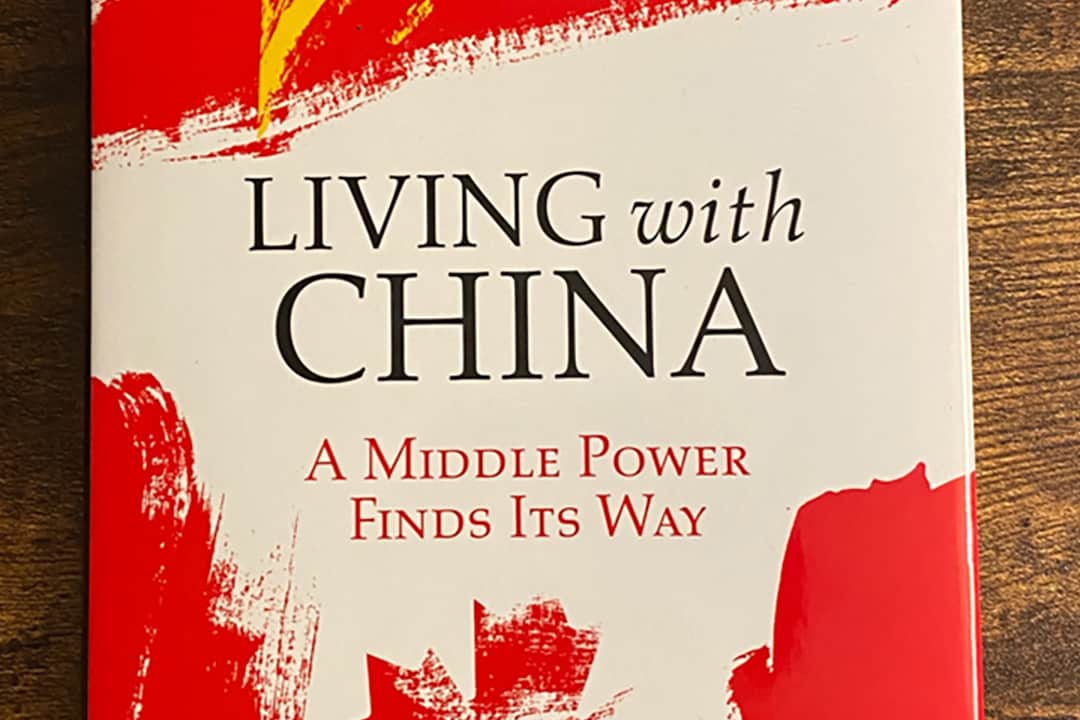Prime Minister Pierre Trudeau once characterized Canada’s relationship with the United States as being like sleeping next to an elephant. Now, there are two imposing elephants making matters more complicated for Canada.
Living with China: A Middle Power Finds Its Way — written by Wendy Dobson, Co-Director of the Institute for International Business at the Rotman School of Management and former Canadian Associate Deputy Minister of Finance — was recently announced as a finalist for the 2020 National Business Book Award (NBBA). In it, Dobson outlines Chinese economics and policy for a Canadian readership with the goal of promoting strategic thinking about our bilateral relationship and how it might evolve.
Dobson focuses her research on international business and Canadian public policy. In particular, she has published several popular books on the rise of Asia’s economies. Her book Gravity Shift: How Asia’s New Economic Powerhouses Will Shape the 21st Century was a 2010 finalist for the NBBA and was eventually translated into Mandarin.
Introducing a new superpower
Dobson believes that the gravity of the global economy will shift to China in the future, with the current Western-dominated world order evolving into one with multiple players. She criticizes the belief that China will become similar to Western economies and argues that China will forge its own path, different from how the West developed. Accordingly, Living with China asks Canadians to learn to live with China on their own terms.
“Canada’s permanent reality is its location and deep integration with the US economy,” Dobson wrote. “But diversifying trade and foreign relationships serves Canada’s long-term interests.” Thus, it would be necessary for Canada to recognize this change in gravity and develop appropriate strategies to approach China economically.
She looks at the potential markets in China and finds where they coincide with Canadian business interests. With criticisms of Canada’s dependence on American markets having been around for decades, Dobson seriously considers cooperation with China as a potential cure to Canada’s ‘America-dependency syndrome.’
The economic relationship between Canada, China, and the US has become complicated in recent years, especially as Clause 32 of the 2019 United States-Mexico-Canada Agreement (USMCA) gives the US considerable say over how Canada forms trade deals with what the US State Department deems “non-market countries,” like China. Dobson suggests that Canada should plan a “sectoral approach” in trade with China to avoid Clause 32.
My opinion
Despite its short length, Living with China gives a highly detailed introduction to China. This makes it highly preferable in comparison to literature of similar length: penny-press pamphlets or excerpts from President Donald Trump’s speeches.
However, this introduction takes five chapters to introduce Chinese politics, industry, and diplomacy, leaving only its sixth and final chapter to introduce a diplomatic strategy for Canada. Indeed, the connection between the final chapter and the preceding five is so weak that it would be no exaggeration to say that it could be published independently. For a book titled Living with China: A Middle Power Finds Its Way, one would think that the ‘protagonist’ should be Canada rather than China.
Also, note that the book would only really be readable for those serious about learning the subject, with Dobson using an academic tone throughout it. While interesting, be aware that it is academic material, not a popular conspiracy novel.
Something else to keep in mind is that Living with China was published in 2019 and is focused on the issues of those ‘good times.’ Back then, China was Canada’s second largest trade partner, and optimizing bilateral relations was essential. In contrast, today, the outbreak of the COVID-19, the fast-approaching US presidential election, and the recent abandonment of Canada-China free trade talks mean that the relationship between China and Canada is heading toward an unpredictable future.
Regardless, the book has a unique angle and presents a fascinating analysis of Canada’s potential future development strategies in the face of both China and the US. Anyone who is interested in increasing public engagement, investment, collaboration, and diplomacy with China — or just wants to learn more — should read this book. In this day and age, it is important to emphasize politics with a practical perspective that respects reality — instead of meaningless slogans like Conservative Leader Erin O’Toole’s “Canada First.”


